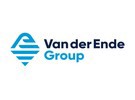Van der Ende Group has released a whitepaper on water management in horticulture and the challenges that come with it. The whitepaper, entitled "Water management in horticulture and its challenges," demonstrates what water management looks like, what challenges can arise, and how they can be addressed in the most sustainable way possible to achieve the highest possible quality of irrigation water.
In the past, irrigation water was considered a carrier of nutrients, and there was less discussion about the quality and availability of water. Today, however, the topic of (irrigation) water is high on the agenda of many horticultural companies, where quality, availability, and waterlogging are much-discussed issues. Water is indeed a basic necessity for both flora and fauna.
In a horticultural company, there is never just one type of water. There are multiple forms of water, all of which relate to irrigation water. Therefore, the multitude of factors that play a role in water management in a horticultural company is extensive. Due to all these different water flows, integrated water management is now a requirement.
Van der Ende Group has therefore developed the horticultural water chain model, which encompasses the entire chain from the input water to the treatment of discharge water. The model consists of an availability strategy, a reuse strategy, and a discharge strategy.
The availability strategy deals with the various forms of input water, where rainwater is often the primary water source. However, due to climate change, the availability of rainwater is not constant, which calls for a secondary water source to always have enough irrigation water available.
The reuse strategy deals with the reuse of drain water. By reusing drain water as much as possible, water and nutrients that are still present in the water can be saved, but the hygiene aspect is crucial.
The discharge strategy deals with water discharges, where local legislation often imposes restrictions. Continuous reuse of drain water leads to the accumulation of various elements, including sodium. When the drain water is no longer of sufficient quality for reuse, it is often discharged.
Van der Ende Group's whitepaper offers a comprehensive analysis of water management in the horticulture sector and provides solutions to the challenges.
Click here to download the whitepaper.
For more information:
Van der Ende Groep
info@vanderendegroep.nl
vanderendegroup.com
